![The ‘Pinocchio: Vampire Slayer’ Saga Is Really, Really Good [Review]](http://townsquare.media/site/622/files/2012/08/pvs01.jpg?w=980&q=75)
The ‘Pinocchio: Vampire Slayer’ Saga Is Really, Really Good [Review]

It's very easy to dismiss Pinocchio, Vampire Slayer without ever reading a single page. That's part of the trouble for the creator of a high concept book: If it's something that can be boiled down to three words, it's easy for readers to think they've got everything they need to know. Pinocchio lies, his wooden nose grows, he stabs vampires with it. No need to actually read it, right?
But here's the thing: Pinocchio, Vampire Slayer is actually really, really good.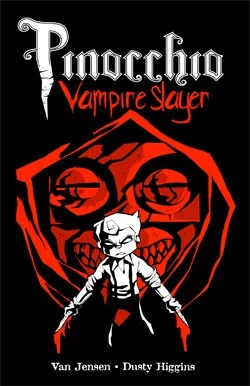 If you're one of the people who passed on Pinocchio for being a little too clever, I can sympathize. Even though I'm pretty well-known for my love of a good high concept, I was the same way. It wasn't until I had a conversation with Kevin Church -- yet another naysayer who came around after giving it a read and told me it was worth a look -- and spoke to the creators at HeroesCon that I decided to give the book a fair shake, just in time for the last of four chapters to be released this month from SLG.
If you're one of the people who passed on Pinocchio for being a little too clever, I can sympathize. Even though I'm pretty well-known for my love of a good high concept, I was the same way. It wasn't until I had a conversation with Kevin Church -- yet another naysayer who came around after giving it a read and told me it was worth a look -- and spoke to the creators at HeroesCon that I decided to give the book a fair shake, just in time for the last of four chapters to be released this month from SLG.
And really, even beyond the oh-that's-cute premise, there's a stigma that comes from being lumped in with the crop of downright unreadable books based on fairy tales that cropped up as pale imitations of Fables and League of Extraordinary Gentlemen. If there's a master list of things we don't ever need to see any more of in comics, "A Dark Reimagining of a Classic Children's Story" is right up there with "Superman Crying" and "A Costume With Thigh Pouches."
There's a lot stacked against this book through no fault of its own before you even get past the cover, but once you do, it ends up being one of the most charming, fun-filled comics that I've read in quite a while. Van Jensen and Dusty Higgins (writer and artist/creator, respectively) aren't doing a grimmed-up version of a Disney cartoon, they're doing a thrilling adventure story, and they manage to wring a lot of genuine emotion out of it, too.
That's not to say that they don't embrace the inherent goofiness of their premise, because they definitely do, just not in the way that you might expect. Make no mistake, Pinocchio telling a lie -- often in the form of a sort of reverse-badass line like "I'm NOT going to enjoy this" -- and then snapping off his nose to do some vampire slaying is pretty much the core mechanic of this book, but Jensen and Higgins manage not to give into the temptation to beat it to death. It punctuates the action, but mostly, they use that idea as the focus to build a character.
They take a really interesting view of it, treating Pinocchio as a character who can't tell a lie without everyone around him knowing, because they can quite literally see it on his face. It's such a simple idea, but they follow it to its logical conclusion by creating a character who can't even lie to himself, unable to fool himself into a comfortable thought like "we can beat these monsters." There's a tangible penalty to his optimism whenever it crosses the line into self-delusion, and the result is a very pessimistic character who still has to pull it together and keep pushing forward to save his friends (and the world). There's a great sort of heroism that comes from that, and while using it purely for heaping a depressing amount of pathos on the reader is another one of those temptations that it'd be easy for the creators to fall into, they balance it out by using it as a springboard for comedy, too.
It's that comedy that was another huge surprise for me. Really, if Pinocchio has a major flaw, that's where you'll find it, particularly in the first volume. It's not that the jokes aren't funny, but that they might actually be a little too funny. The comic relief comes a little too often in that first story, and while you can see Jensen and Higgins trying to balance things out so that the story doesn't get too dour, that's a tough balance to walk in a way that seems genuine for the reader. There are a few places where they err a little too far on the side of goofiness, and it throws things out of balance to have a zany gag slammed right up with one of the genuinely tragic moments that they put into their story, lessening the impact of both.
But honestly? That's nitpicking. If the problem in your comic is that you sometimes try a little too hard to to be fun, and that your emotional touchstones are a little too resonant to be joked away, you're in pretty good shape. And as the story progresses through to The Great Puppet Theater and the two-volume finale, Of Wood and Blood, Jensen's scripts find a much more solid rhythm. A larger supporting cast gets introduced so that Pinocchio's one-liners can be replaced with more engaging conversations, and a story that's already pretty good keeps getting better.
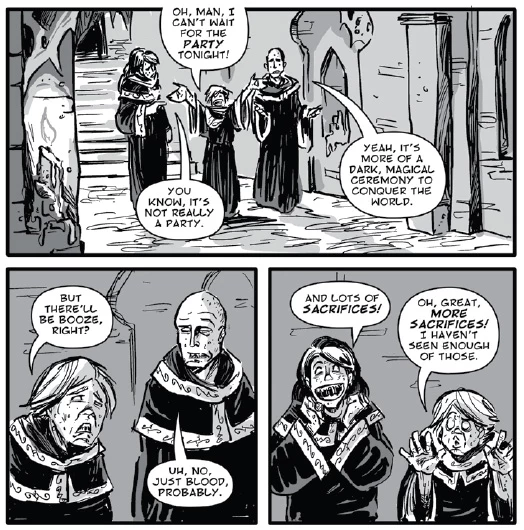
Along the same lines, Higgins' art goes through a pretty dramatic transformation over the four volumes, too. That's to be expected with a series that's drawn over the course of four years, but it's really noticeable if you sit down and read them all at once like I did. Higgins starts out with a style that's decidedly exaggerated and cartoony, but also heavily influenced by Mike Mignola:
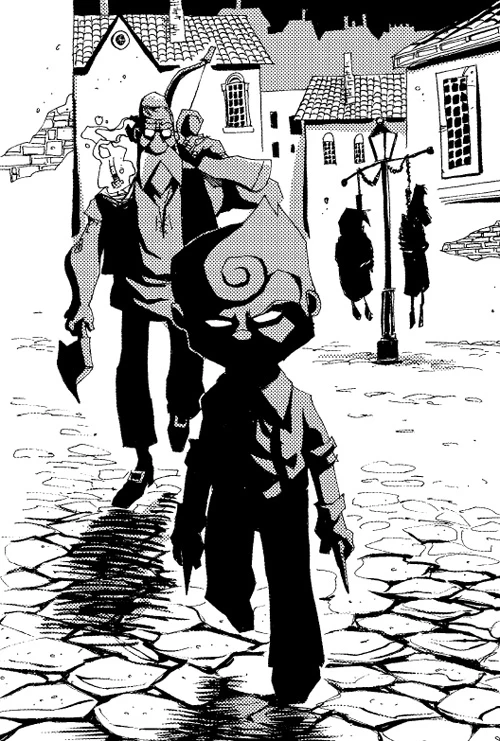
That's not really a complaint, either. Comparisons to Hellboy are pretty much mandatory for a book about a wisecracking adventurer battling the supernatural, but if you're going to be influenced by someone working in that genre, it might as well be the best.
As it continues, though, Higgins adds to his art, taking from other influences (there's a lot of Guy Davis in those later volumes, for instance) and building into something that's a little more unique and fluid. Check out how much changes just for Pinocchio and Carlotta from v.1 to v.4:
Volume 1:

Volume 4:
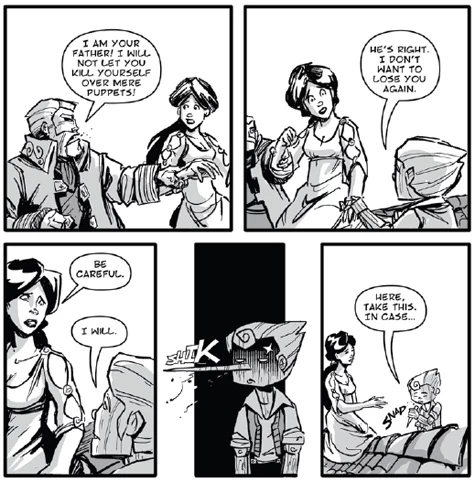
It almost doesn't look like the same artist -- I had to double check to make sure Higgins drew the whole thing -- but he keeps that same energy and fluid linework to what he's doing. It's pretty great to see even without the story underneath it, although I really did like the zip-a-tone effect that he abandoned for a more traditional grayscale look after the first story.
Another thing that's worth noting: It's a really solid all-ages book. Well, maybe not all ages, what with vampires being stabbed with pointy objects all the time and the occasional river of blood, but it's the kind of thing I would've lost my mind over at the age of ten or twelve. If you know a kid who's seen, say, Legend of Korra, they're probably good to go with anything they find in here, which really reinforces Jensen and Higgins' stated goal of doing a sequel to the original story, right down to the instructive moral lesson.
Part of that all-ages appeal is that, once again, it's a book that's a lot smarter than it seems. There are certainly parts that aren't complicated by any stretch of the imagination -- in a book about vampires, it's pretty obvious who the mysterious "Master" is going to be from his very first mention -- but the way it all comes together is done so well, blending an action story and the magic of a fable into a pretty solid reveal. It's just neat stuff.
There's nothing I hate more than admitting I was wrong about something -- no surprise there -- but with Pinocchio, Vampire Slayer, I don't really have a choice. I slept on it for years and almost missed out on a book I ended up liking quite a bit.
More From ComicsAlliance


![The Flash Goes To Jail, Goes Directly To Jail In ‘The Flash’ #50 [Preview]](http://townsquare.media/site/622/files/2016/04/Flash00.jpg?w=980&q=75)
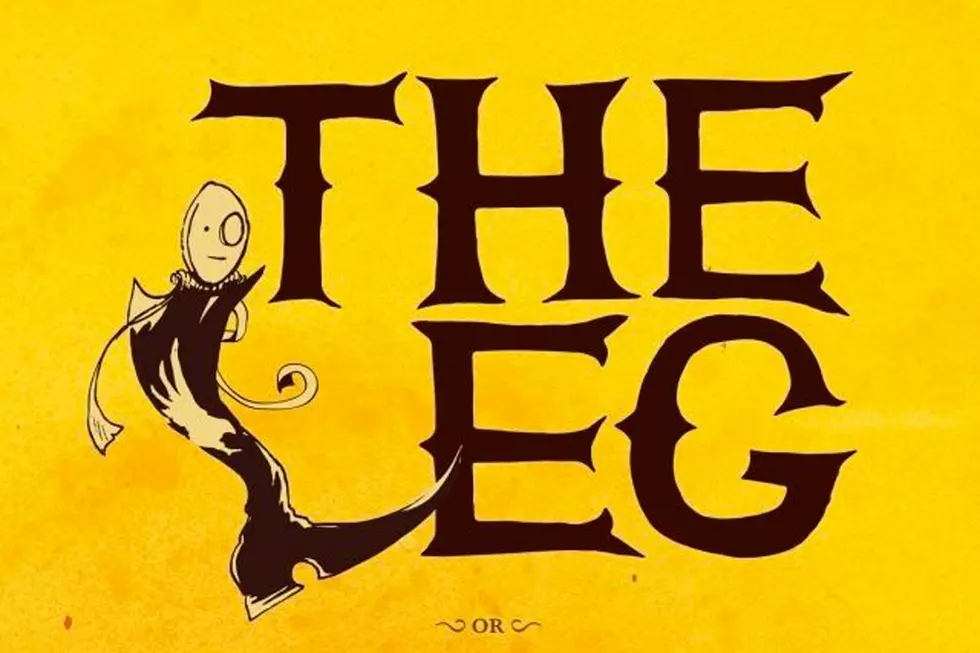
![‘GloomCookie’ Author Serena Valentino on Wicked Disney and the Elegance of Villains [Interview]](http://townsquare.media/site/622/files/2015/10/beastwithin.jpg?w=980&q=75)


![Van Jensen And Jose Pimienta On ‘The Leg,’ Their Kickstarter Funded Graphic Novel About One Severed Limb’s Journey To Save Mexico [Interview]](http://townsquare.media/site/622/files/2014/05/Leg01.jpg?w=980&q=75)

